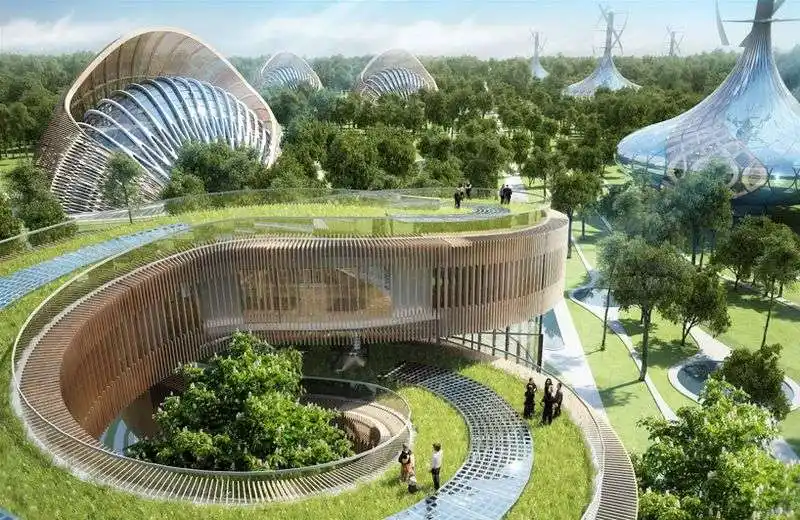
Sustainable Architecture: The New Gold Rush
In an era where climate change dominates global headlines and corporations race to achieve net-zero emissions by 2050, a quiet revolution is reshaping the built environment.
Sustainable architecture – once considered a niche passion project for idealistic designers – has exploded into what industry insiders are now calling “the new gold rush.”
Trending Now!!:
Billions of dollars in investment, skyrocketing demand for green building certifications, and a flood of new regulations are turning eco-friendly design from a moral choice into one of the most lucrative sectors in real estate and construction.
Why Sustainable Architecture Is Suddenly Booming
The numbers tell the story better than any manifesto. According to the World Green Building Council, the global green building market is projected to reach $1.2 trillion by 2030.
LEED-certified and BREEAM-certified projects now command rental premiums of 8–15% and sell 20–30% faster than conventional buildings.
Institutional investors – from BlackRock to sovereign wealth funds – are pouring capital into ESG-compliant real estate at unprecedented rates. Governments are adding rocket fuel.
The European Union’s Green Deal, the U.S. Inflation Reduction Act’s $369 billion in clean energy incentives, and China’s aggressive carbon-neutrality targets by 2060 have created a regulatory tidal wave.
Cities from Singapore to Stockholm are introducing mandatory green building codes, zero-carbon requirements for new developments, and hefty carbon taxes on high-emission structures.
In this landscape, architects and developers who master sustainable design aren’t just staying compliant – they’re positioning themselves at the forefront of a trillion-dollar transformation.
The Most In-Demand Sustainable Architecture Trends of 2025–2030
1. Mass Timber and Low-Carbon Materials
Cross-laminated timber (CLT), bamboo, and mycelium-based composites are replacing steel and concrete in high-rise construction.
Projects like Mjøstårnet in Norway (the world’s tallest timber building) and Google’s upcoming mass-timber campuses prove that sustainable materials can be structural, beautiful, and cost-competitive.
2. Biophilic Design and Living Buildings
Biophilic architecture – integrating natural light, vegetation, and organic forms – has moved from luxury offices to mainstream residential and healthcare projects.
The International Living Future Institute’s Living Building Challenge is becoming the new platinum standard, pushing buildings to generate their own energy, capture and treat all water, and improve occupant health.
3. Passive House and Net-Zero Energy Design
Passive House certification, once rare a decade ago, is now a baseline requirement in parts of Europe and increasingly in North America.
Ultra-low-energy buildings that produce as much energy as they consume (through solar, geothermal, and advanced insulation) are no longer experimental – they’re the expectation.
4. Circular Economy and Adaptive Reuse
Instead of demolishing outdated structures, leading firms are embracing adaptive reuse and design for disassembly. Retrofitting existing buildings with energy-efficient systems, green roofs, and smart facades can cut embodied carbon by up to 70% compared to new construction.
5. Smart, Regenerative Architecture
AI-driven building management systems, phase-change materials, and dynamic facades that respond to weather conditions are pushing buildings beyond net-zero into regenerative territory – structures that actively improve their environment by cleaning air, generating surplus energy, and supporting biodiversity.
The Talent and Investment Gold Rush
Architecture firms that once specialized in conventional design are frantically hiring sustainable design experts, LEED APs, WELL-accredited professionals, and Passive House consultants.
Salaries for certified green building experts have jumped 25–40% in the past five years. Meanwhile, venture capital is flooding into proptech and cleantech startups focused on decarbonizing the built environment – from carbon-tracking software to robotic 3D-printing with recycled materials.
Developers who ignored sustainability five years ago are now racing to rebrand entire portfolios as “ESG-compliant” or “carbon-neutral.” The phrase “green premium” has flipped into a “brown discount” – conventional buildings are trading at lower valuations and facing higher vacancy rates as tenants demand healthier, more efficient spaces.
The New Winners (and Losers)The architects, engineers, and developers leading this green revolution – firms like Snøhetta, BIG, Foster + Partners, and emerging studios specializing in regenerative design – are booking projects years in advance.
Cities that position themselves as hubs for sustainable architecture (Copenhagen, Vancouver, Singapore, and Masdar City) are attracting talent and investment like 19th-century boom towns. Conversely, firms and regions that are slow to adapt face obsolescence.
Traditional construction companies without expertise in low-carbon materials or energy modelling are losing bids. Buildings that fail to meet evolving energy performance standards risk becoming stranded assets.
The Bottom Line
Sustainable architecture is no longer about tree-huggers and hempcrete experiments. It’s a hard-nosed economic imperative driven by regulation, investor demand, tenant preferences, and competitive advantage.
The professionals and companies that master green building design, net-zero architecture, biophilic principles, and circular economy strategies aren’t just building for the future – they’re printing money in the present.
In the 21st century, the real gold rush isn’t in riverbeds or silicon chips. It’s in blueprints that heal the planet while filling bank accounts.
The sustainable architecture revolution is here – and the prospectors who arrive first will claim the richest seams.

